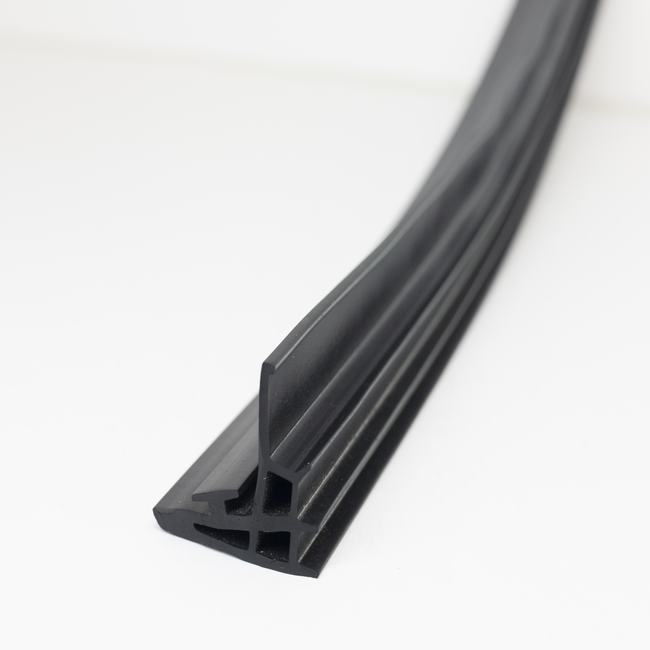Steel door seals represent essential components in the construction and maintenance of steel doors, offering a combination of sealing, insulation, and security features. These seals, which come in various types and designs, play a crucial role in enhancing the overall performance and efficiency of steel doors in both residential and commercial applications. In this comprehensive description, we’ll explore the diverse aspects of steel door seals, including types, materials, mechanisms, installation methods, and the benefits they bring to spaces.
- Types of Steel Door Seals:
- Door Sweep Seals: Attached to the bottom of the door, these seals prevent drafts, dust, and pests from entering while providing a barrier against sound transmission.
- Jamb Seals: Installed on the sides of the door frame, these seals enhance weather resistance and contribute to thermal insulation.
- Threshold Seals: Placed at the bottom of the door frame, these seals create a barrier against water infiltration and enhance overall weatherproofing.
- Material Composition:
- Neoprene: Known for its flexibility and resistance to temperature extremes, neoprene seals provide effective sealing and durability.
- Silicone: Offers high-temperature resistance, flexibility, and durability, making it suitable for demanding environments.
- EPDM (Ethylene Propylene Diene Monomer): Known for excellent weather resistance, UV stability, and longevity.
- Mechanisms and Designs:
- Compression Seals: These seals compress when the door is closed, creating a tight seal against the door frame. Common in door sweeps and jamb seals.
- Brush Seals: Utilize dense bristles made of materials like nylon or polypropylene to create an effective barrier against drafts, dust, and insects.
- Drop Bar Seals: Automatically drop down to seal the gap at the bottom of the door when it’s closed, providing enhanced weather protection.
- Installation Methods:
- Adhesive Application: Many steel door seals come with adhesive backing for easy and secure attachment to the door or frame.
- Screws or Nails: Some seals are designed for screw or nail attachment, providing a more permanent and robust installation.
- Slide-in Installation: Certain seals are designed to slide into existing channels or retainers on the door, simplifying the installation process.
- Weather Protection:
- Draft Prevention: Steel door seals effectively prevent drafts, maintaining a comfortable indoor environment and contributing to energy efficiency.
- Water Resistance: Threshold seals create a barrier against water infiltration, protecting the interior space from rain and moisture.
- Energy Efficiency:
- Thermal Insulation: Certain seals, especially those with compression mechanisms, contribute to thermal insulation by minimizing heat loss or gain through the door.
- Reduced Energy Costs: By preventing drafts and enhancing insulation, steel door seals contribute to reduced energy consumption and lower heating or cooling costs.
- Sound Insulation:
- Brush Seals: The dense bristles in brush seals create a barrier against sound transmission, contributing to a quieter indoor environment.
- Compression Seals: Effective compression seals help reduce noise infiltration, making them valuable in spaces where sound insulation is crucial.
- Security Enhancement:
- Closed Sealing: Steel door seals, especially those with compression or drop bar mechanisms, provide a closed and secure seal, reducing the risk of unauthorized access.
- Deterrence Against Pests: Seals with effective closure mechanisms act as a deterrent against pests and insects, maintaining a hygienic and pest-free interior.
- Durability and Longevity:
- Resilient Materials: The use of durable materials such as neoprene, silicone, or EPDM contributes to the longevity and effectiveness of steel door seals.
- Corrosion Resistance: Seals with corrosion-resistant components are suitable for exterior applications, ensuring durability in various environmental conditions.
- Maintenance Considerations:
- Regular Inspection: Periodic checks ensure that steel door seals are in good condition, addressing any wear, tear, or damage promptly.
- Cleaning: Regular cleaning of seals helps maintain their effectiveness and prevents the accumulation of debris or contaminants.
- Versatility in Applications:
- Commercial Spaces: Steel door seals find widespread application in commercial settings, including offices, warehouses, and industrial facilities, where sealing, insulation, and security are critical.
- Residential Settings: These seals are equally valuable in residential spaces, contributing to energy efficiency, comfort, and protection against external elements.
- Customization and Design Flexibility:
- Variety of Styles: Steel door seals are available in various styles, sizes, and configurations to accommodate different door types and dimensions.
- Color Options: Some seals offer color options, allowing users to choose options that match or complement the overall aesthetic of the door or space.
In summary, steel door seals are indispensable components that contribute to the overall efficiency, insulation, and security of steel doors. Their diverse types, material compositions, mechanisms, and installation methods make them versatile solutions for various door configurations and applications. Properly chosen and well-maintained steel door seals enhance the longevity and optimal functionality of steel door systems, ensuring a secure, energy-efficient, and comfortable indoor environment.





